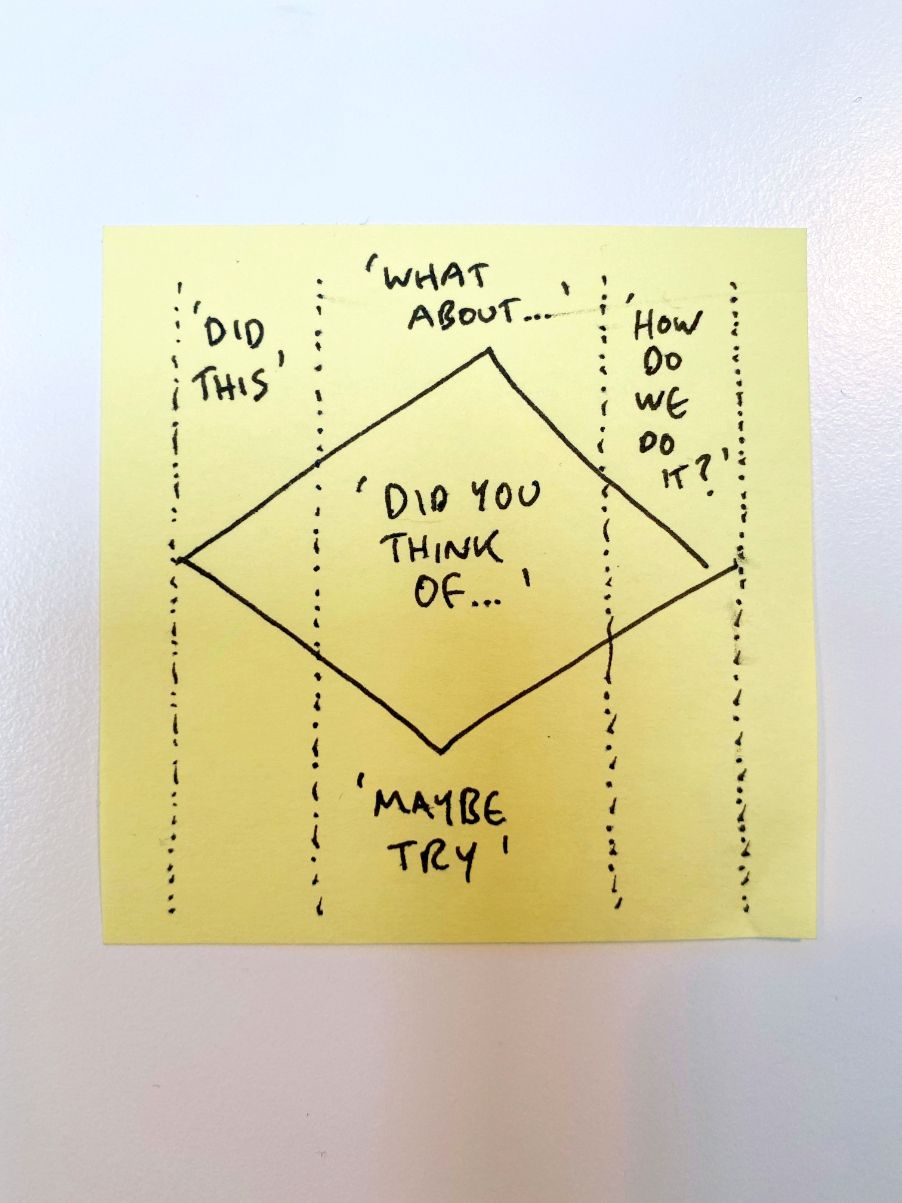Diamond discussions
Yesterday, I was pondering on how discussion frameworks can help streamline all sorts of things within design. Discussion guides help keep user research focussed and the results comparable. Kickoff meeting agenda guides can accelerate projects and are designed to uncover project difficulties before you start. The Five Whys is designed to really get to the heart of a problem and help the receiver to work through a potential solution in answering.
For the most part, these work well. Structuring conversation to ensure you don’t forget to say things or that you say things in the right way. But, as a regular participant, receiver or instigator of discussions like this in the past, it’s also quite unnatural. They can seem overly formal, or feel like a script. Just watch a seasoned user researcher follow a discussion guide. It’s a real skill to do this and appear natural enough to build a relationship with your participant quickly yet ensure the results of that discussion are cross comparable with others. It can take years of practice. The same way, a salesperson needs to follow a script to get you to upgrade your double glazing windows. The art is not in designing a better discussion framework, but for that framework to feel like natural conversation and deliver on the aims.
For a good few years now, I’ve been having what I call Diamond Discussions. Here’s a little diagram of what this is…

Starting from the left, the discussion starts focussed and specific. In a standup situation, this might be the ‘what I did yesterday’ outline. In a 1-1 with a team member, it could be ‘That specific thing we discussed yesterday, can you talk me through the outcome’.
As you move through the discussion – and it could be 3 minutes or 30 – you move from specific into a broader space. This typically happens naturally as the topic of conversation moves from preconceived points of discussion. It’s here that problems are explored and advice is given and received. This is the right time to dig deep into a topic, or spin off into the ‘what-ifs’. But at some point, we start to narrow in on the practical.
In closing off the discussion, it’s time to get focussed: clear next steps; a plan of action. Or it could be as simple as feeling better about something than at the start of the discussion.
There are a few things to consider with this loose framework, though. It’s applicable for tiny discussions or big ones. Most people are more comfortable in one part of the conversation than others. For example, you may find that some people are ‘dreamers’ and really enjoy the creative process of throwing ideas around without the constraints of anything. They can spin off in the middle of the discussion and they may shy away from actual specifics in the tail end of the conversation.
The main takeaway would be this is a discussion framework. It’s two way. Unlike the Five Whys, it shouldn’t feel like one person is in control of how this goes. There is no questioner or answerer. It’s a pathway from A to B to C and should feel natural for everyone involved.
Give it a try!
Tags that this post has been filed under.